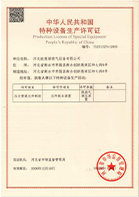
Nov . 13, 2024 09:39
Back to list
gas pressure reducer
Understanding Gas Pressure Reducers Importance and Applications
Gas pressure reducers, often referred to as pressure regulators, are essential components in various industrial, commercial, and residential applications where precise gas flow control is crucial. Their primary function is to reduce the pressure of gas from a high-pressure source to a lower, manageable level suitable for downstream applications. This article aims to explore the significance, working principles, types, and applications of gas pressure reducers, highlighting their importance in ensuring safety and efficiency in gas usage.
The Importance of Gas Pressure Reducers
In many gas systems, especially those involving industrial processes, the pressure of the gas supplied can be exceedingly high, which poses several risks. High-pressure gas can lead to equipment damage, operational inefficiencies, and safety hazards such as leaks or explosions. Gas pressure reducers are vital for controlling these risks, providing a steady and safe lower pressure that equipment and processes can handle reliably.
Moreover, pressure regulators play a significant role in optimizing the performance of gas appliances and systems, which include heating systems, gas-powered engines, and various manufacturing processes. By maintaining consistent pressure, these devices ensure that burners operate effectively, reducing fuel consumption and emissions while maximizing energy efficiency.
How Gas Pressure Reducers Work
Gas pressure reducers operate based on a simple yet effective principle. They are usually equipped with a diaphragm mechanism or a spring-loaded valve that responds to changes in pressure. When high-pressure gas enters the regulator, the device senses the pressure level and automatically adjusts the flow by compressing or releasing the diaphragm. This action allows for the consistent delivery of gas at a predetermined pressure downstream.
Most regulators are designed to act as both a pressure control mechanism and a flow control system. An important aspect of their operation is the set pressure, which is the target pressure at which the gas is delivered. This setting can often be adjusted based on the specific requirements of the application. By doing so, users can achieve greater control over their gas systems, accommodating varying operational demands.
Types of Gas Pressure Reducers
Gas pressure reducers come in various types, each suited for different applications and gas types
. The two primary categories includegas pressure reducer

1. Single-Stage Regulators These are designed to reduce high pressure to a lower output pressure in a single step. They are commonly used in applications where the demand for gas does not fluctuate significantly.
2. Two-Stage Regulators These regulators perform the pressure reduction in two steps, often allowing for a more stable output pressure even when there are fluctuations in input pressure or gas demand. They are particularly useful in applications where precise pressure control is critical, such as in laboratory settings.
Other types of regulators include electronic pressure regulators, which provide advanced control features, and specific regulators designed for corrosive or specialized gases.
Applications of Gas Pressure Reducers
Gas pressure reducers are found in numerous industries and applications, illustrating their versatility
- Healthcare In hospitals, regulators are crucial for ensuring that medical gases such as oxygen are delivered at safe and consistent pressures to patients. - Manufacturing Industries rely on pressure regulators to provide the correct gas supply to machinery, ensuring safe and efficient operations in processes like welding and cutting. - Heating Systems Residential and commercial heating options that utilize gas need reliable pressure regulation to ensure safe operation and comfort.
- Transportation In vehicles powered by liquefied petroleum gas (LPG) or natural gas, pressure regulators help maintain optimal fuel pressure for efficient engine performance.
Conclusion
Gas pressure reducers are fundamental to the safe and efficient use of gas in a variety of settings. By regulating gas pressure accurately, they prevent hazards associated with high-pressure systems, optimize fuel efficiency, and protect equipment from damage. Whether in industrial applications, healthcare, or residential settings, gas pressure reducers are vital components that contribute to effective gas management. Understanding their function, types, and applications ensures that users can make informed decisions about their gas systems, ultimately enhancing safety and efficiency.
Next:
Latest news
-
Safety Valve Spring-Loaded Design Overpressure ProtectionNewsJul.25,2025
-
Precision Voltage Regulator AC5 Accuracy Grade PerformanceNewsJul.25,2025
-
Natural Gas Pressure Regulating Skid Industrial Pipeline ApplicationsNewsJul.25,2025
-
Natural Gas Filter Stainless Steel Mesh Element DesignNewsJul.25,2025
-
Gas Pressure Regulator Valve Direct-Acting Spring-Loaded DesignNewsJul.25,2025
-
Decompression Equipment Multi-Stage Heat Exchange System DesignNewsJul.25,2025

